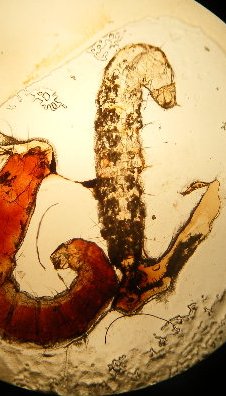Difference between revisions of "Category:Fleas"
(Created page with 'Category:Parasites') |
|||
| (13 intermediate revisions by one other user not shown) | |||
| Line 1: | Line 1: | ||
| − | [[Category: | + | {{frontpage |
| + | |pagetitle =Fleas (Siphonaptera) | ||
| + | |pagebody = | ||
| + | <div style="text-align: left; direction: ltr; margin-left: 1em;"> | ||
| + | Fleas are wingless insects that are laterally flattened so can move rapidly through hair and fur. Their hind legs are adapted for jumping. They are of major significance to veterinary practice and are seen on a daily basis at most general practices. | ||
| + | Adult fleas are blood sucking ectoparasites which can cause pruritis, annoyance, loss of condition and anaemia if present in large numbers. [[Flea Allergic Dermatitis|Flea allergic dermatitis]] can also occur where the animal becomes allergic to the antigens in the flea saliva triggering a hypersensitivity reaction when the flea bites. | ||
| + | Fleas can also act as intermediate hosts for the tapeworm [[Dipylidium caninum|''Dipylidium'']] and as an important vector for diseases such as cat scratch disease, the bubonic plague and [[Myxomatosis|myxomatosis]]. | ||
| + | </div> | ||
| + | |contenttitle =Content | ||
| + | |contentbody =<big><b> | ||
| + | <br> | ||
| + | <categorytree mode=pages>Fleas</categorytree> | ||
| + | </b></big> | ||
| + | |logo =Flea larvae logo.jpg | ||
| + | }} | ||
| + | |||
| + | ==Links== | ||
| + | [[Flea Dermatosis]] | ||
| + | |||
| + | *[[Flea Bite Hypersensitivity|Flea allergic dermatitis (FAD)]] | ||
| + | |||
| + | *Fleas act as intermediate hosts for [[Dipylidium caninum|'''''Dipylidium'' tapeworms''']] | ||
| + | |||
| + | *Fleas act as vectors for [[Myxomatosis|myxomatosis]] in rabbits | ||
| + | |||
| + | [[Category:Insecta]] | ||
| + | [[Category:To_Do_-_Parasites]] | ||
Latest revision as of 14:22, 4 August 2010
Fleas are wingless insects that are laterally flattened so can move rapidly through hair and fur. Their hind legs are adapted for jumping. They are of major significance to veterinary practice and are seen on a daily basis at most general practices. Adult fleas are blood sucking ectoparasites which can cause pruritis, annoyance, loss of condition and anaemia if present in large numbers. Flea allergic dermatitis can also occur where the animal becomes allergic to the antigens in the flea saliva triggering a hypersensitivity reaction when the flea bites. Fleas can also act as intermediate hosts for the tapeworm Dipylidium and as an important vector for diseases such as cat scratch disease, the bubonic plague and myxomatosis.
Links
- Fleas act as intermediate hosts for Dipylidium tapeworms
- Fleas act as vectors for myxomatosis in rabbits
Pages in category "Fleas"
The following 13 pages are in this category, out of 13 total.
